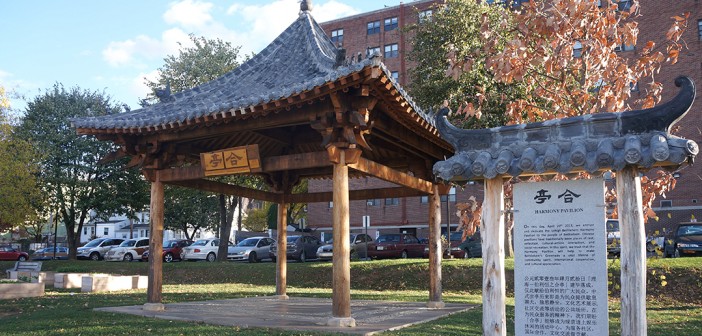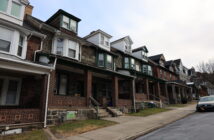When Bethlehem resident Javier Toro first moved to the area, he and his family would picnic on Lehigh’s campus. But when Toro began to meet more people in the Hispanic community and mentioned his family picnics, he received alarmed reactions.
“They said, ‘You’re crazy, you can’t do that,’” Toro said. “I said, ‘Why, I don’t see any electric fence around it.’ Then I started to see the relationship between Lehigh and the community wasn’t the best one.”
Today, campus-community relations continue to be affected by students’ concerns about safety and local residents’ perceptions of the university and its students. The reasons for this gap are difficult to answer concisely, said Breena Holland, director of Lehigh’s South Side Initiative. She said the problem generally stems from power imbalances, a lack of trust, cultural and economic difference, a legacy of cultural disrespect, a history of economic exploitation, transient student populations and a university that is primarily run by people who do not live in the local community.
Two years ago, Bethlehem resident Katelyn Armbruster, ’15, transferred from Northampton Community College to Lehigh.
“It was an upsetting realization when I first came here, but now that I’ve been here and experienced both cultures, I can say there is a lack of communication and participation from both sides,” said Armbruster, who is president of Lehigh’s permaculture club.
In July, Lehigh students were notified via email of two intrusions into student off-campus homes within 24 hours of each other. The second was an attempted homicide and attempted rape of a Lehigh graduate student.
In mid-September, senior Zoe Grossman’s off-campus house on the 500 block of East Fifth Street was broken into and the TV was stolen.
Despite Grossman’s experience, she said she has a positive view of local residents. On the day she and her roommates moved in, her neighbor, a local, greeted them with fresh tomatoes.
Another time, she said, a housemate of hers left her purse outside. A Bethlehem man returned it to her after walking door-to-door looking for its owner.
Students often don’t hear of positive encounters like Grossman’s very often, and that may be partly due to the fact that Lehigh as an institution discourages students from going into the community, said Gerardo Calderon, a Lehigh alumnus who lives in the area and works on campus to improve the relationship between the campus and community.
Calderon said Lehigh encourages this thinking from the very beginning. During orientation, he said, students are told how to protect themselves outside of Lehigh rather than how to engage with the community.
“That sends a pervasive and bias message to the students,” he said.
Certain areas of some neighborhoods are unsafe, Toro said, “but we shouldn’t stereotype or stamp them as places you cannot go.”
Yes, Lehigh students may be targeted specifically, Armbruster said, and that creates a bad perception of the South Side as dangerous. But, she said, crimes against Lehigh students may be more sensationalized, and that creates the idea that students are being targeted even more so than they actually are.
“There are things people should do to be safe in many communities, but sometimes I find students’ concern about safety to be misplaced,” Holland said. “The best way to overcome such fears is to develop relationships with people in the community so it is not such an alien environment.”
Grossman said the onus is on students to be responsible for themselves.
“I am aware that I live in a city and I act accordingly,” Grossman said. “I try not to walk home alone at night. But if you don’t act appropriately, you make yourself an easy target.”
Another reason students may hesitate to venture into the community is because they simply have no need, Calderon said. He said many Lehigh students are very homogenous in that they come from a very specific income status and a very specific region, and these are privileged positions. They are surrounded by people of the same culture and ethnicity. They feel safe and understood. They have no trouble communicating, he said. Therefore, he said, Lehigh students often lack the cultural skill of dealing with people different from them.
“I’m not saying they are guilty, but it’s just how it works,” Calderon said.
Targeting and stereotyping communities is easy, he said, but it takes risk and respect to try to break that cultural boundary.
These difficulties undermine the potential of Lehigh students to be leaders and effective professionals, as well as good citizens, colleagues and friends, Holland said.
Students are not the only ones who have qualms about crossing the line between the campus and the community. As Toro’s example of fellow residents questioning his sense for going on campus shows, residents may be hesitant to engage with the Lehigh community. That partly stems from impressions students leave on the community with their way of life, Armbruster said.
“It disappoints me that the streets where a lot of students live will be littered after a party, and I see that as a form of disrespect,” she said. “If you don’t care about keeping your community clean, you set the precedent that it’s not worth anything.”
Calderon said that residents view students as indifferent to the Bethlehem community because they are only here for four years and don’t see it as their own community.
In order to really understand a community, you have to be there and interact with the residents, he said.
Calderon said that the university simply organizing events for the community is a top-down approach, and one that will not help the relationship.
“The best way to engage students with the community is through real work — not charity, but empowering work — in which students come down from the ivory tower that Lehigh provides to them and start getting their hands dirty working on the ground with community members,” he said.
In that way, Calderon said, the community will understand Lehigh students as real people who care about them and are willing to take the time to understand them. He said this would create not two separate communities, but just one.
“One community doesn’t hurt itself,” he said.
Calderon prefers this method, which he said is a method of prevention, as opposed to repression. Increased police force in South Bethlehem sends a negative message to the local community. But partnering with the community in a situation where both sides are contributing resources and getting something out of it can prevent a hostile environment from developing in the first place.
Holland said the South Side Initiative runs several working groups that deal with interests and problems in the community. These groups allow students to develop relationships with community residents.
“Students start to feel like they are part of the off-campus community,” Holland said. “They feel like insiders rather than outsiders. It makes the community feel more like it is their home, too.
She said the South Side Initiative tries to create institutional structures that bring the on- and off-campus communities together for discussion about local problems. Community members and students can participate in these conversations and learn about failed forms of communication to ensure that they participate in a way that does not perpetuate these problems.
Another way to foster the relationship between campus and community is to utilize the Greenway, Armbruster said.
“The Greenway is the belt between Lehigh and the South Side community,” she said. “My club is looking at it as a way to be the bridge because it’s an open public space — a meeting ground.”
She said the permaculture club works with children from the Boys and Girls Club, which allows Lehigh students to develop relationships with local children. In its second year as a club, she said, they are beginning to see these kids grow up.
“We can have a tangible impact on these students lives that are living and growing up in South Bethlehem,” Armbruster said. “Then those kids will grow up understanding there is a relationship between Lehigh and Bethlehem, changing the future of that relationship.”






Comment policy
Comments posted to The Brown and White website are reviewed by a moderator before being approved. Incendiary speech or harassing language, including comments targeted at individuals, may be deemed unacceptable and not published. Spam and other soliciting will also be declined.
The Brown and White also reserves the right to not publish entirely anonymous comments.
1 Comment
What point is this article trying to get across? It’s reads like it was written by a high schooler. No deep thought was given to many of the quotes. Calderon says stereotyping is bad, but then does exactly that to pretty much every student at Lehigh. Also, his “I’m not saying they’re guilty” quote? He’s basically saying, “I’m not point any fingers, but it’s Lehigh’s fault.” Just because you start your sentence with “I’m not saying they’re guilty” doesn’t absolve you when you then say they’re guilty. That’s not how this works. That’s not how any of this works. Moreover, Lehigh can *only* provide a top-down approach. Period. It’s inherent in what you’re asking. You can’t ask an institution for anything other than a top-down approach. If you want bottom up approach, you can *only* ask the students directly. If you ask the institution, you’re literally asking for a top-down approach. The institution represents the top. It can’t do anything from the bottom. So Calderon basically says, “Lehigh can’t provide these top-down approaches. They need to provide a top down approach.” Does Calderon understand language (not a specific region’s language, but simply the concept of conveying ideas). Almost everything he says is contradictory. It’s as if he just wants to sound like he’s a martryr working for the small man against the Ivory Tower of Lehigh. Just come out and say you want a statue. It’s obvious that’s your goal.
But back to the author’s intent. What the hell was it? Misconceptions? But apparently entirely driven by Lehigh? Way to be an unbiased news source. Or was this an opinion piece? Cause it definitely read more like that. Who the hell is the editor of this newspaper? Do they know how this works? Maybe this really is Lehigh’s fault. Are their journalism classes really letting this happen?
I’m curious to see if this will post as well. I’m interested in knowing whether opposing viewpoints are allowed here.